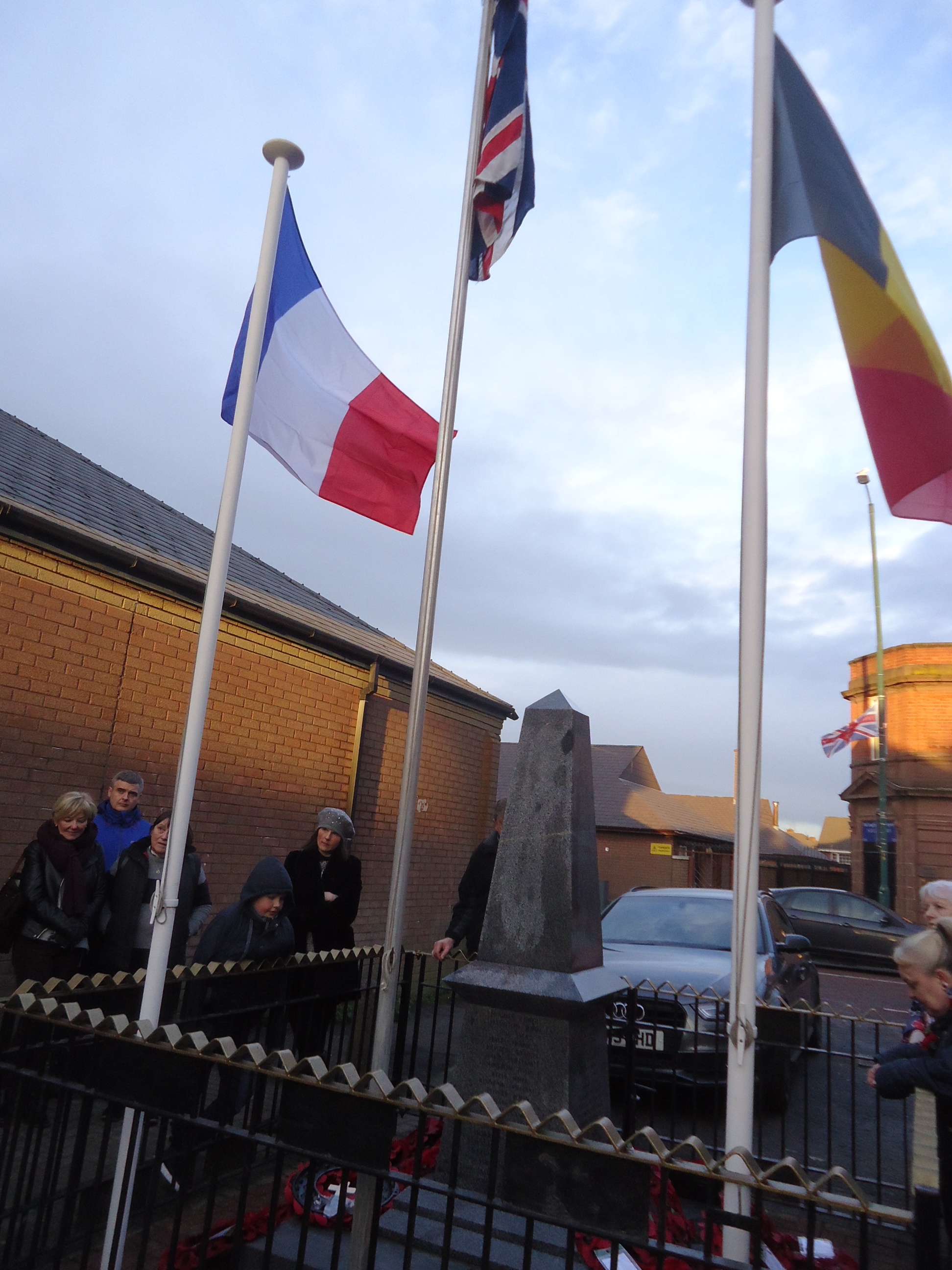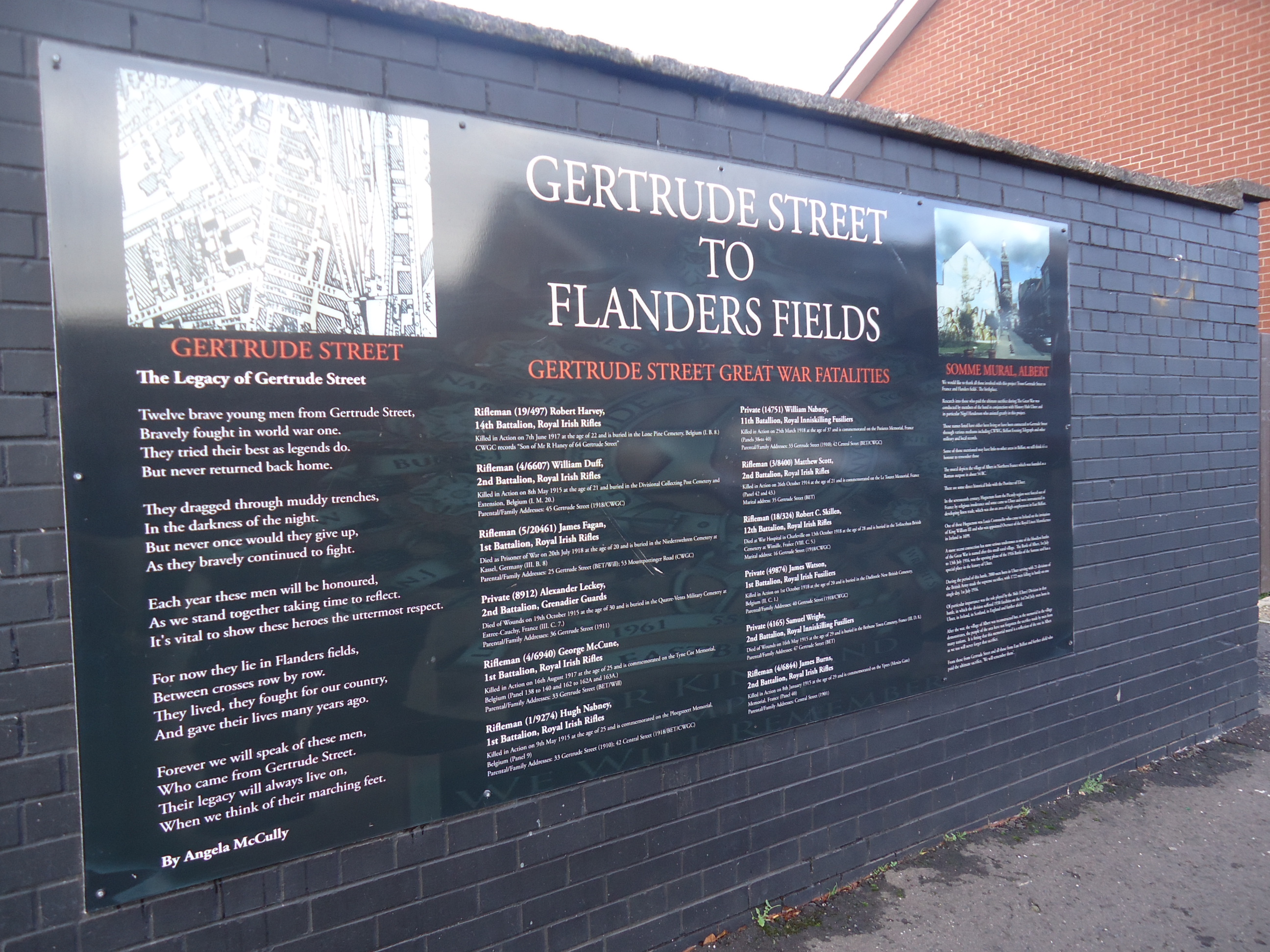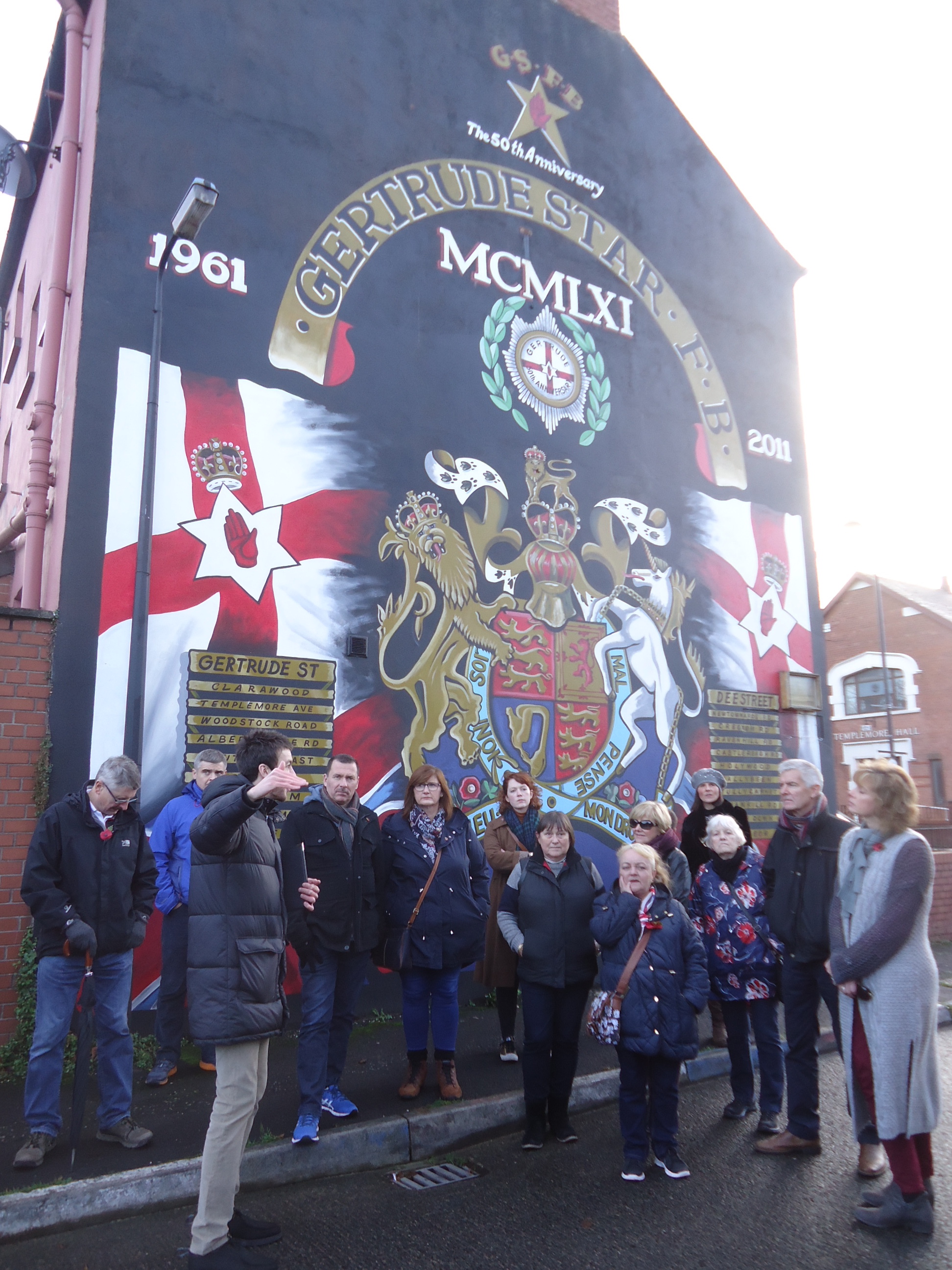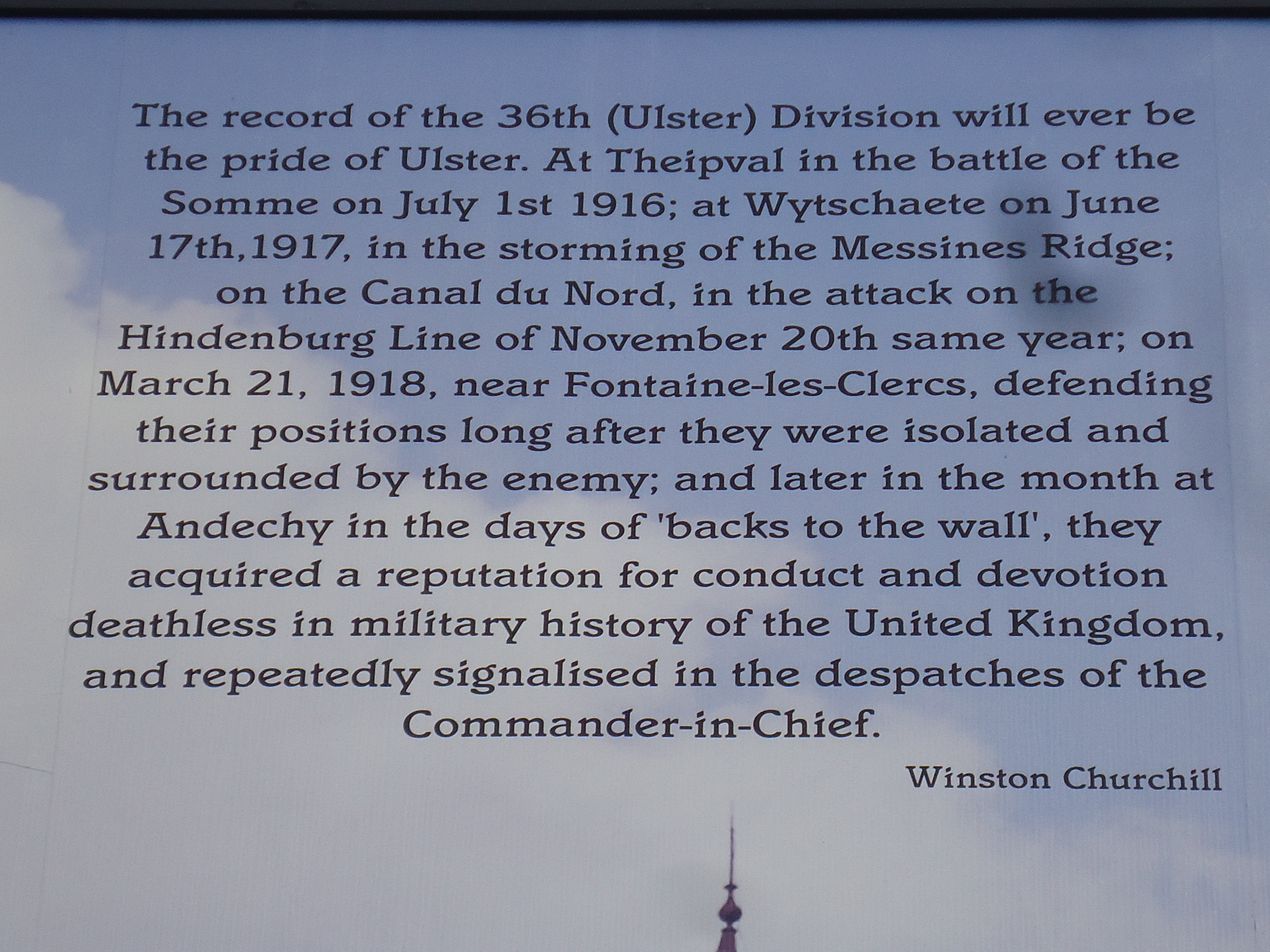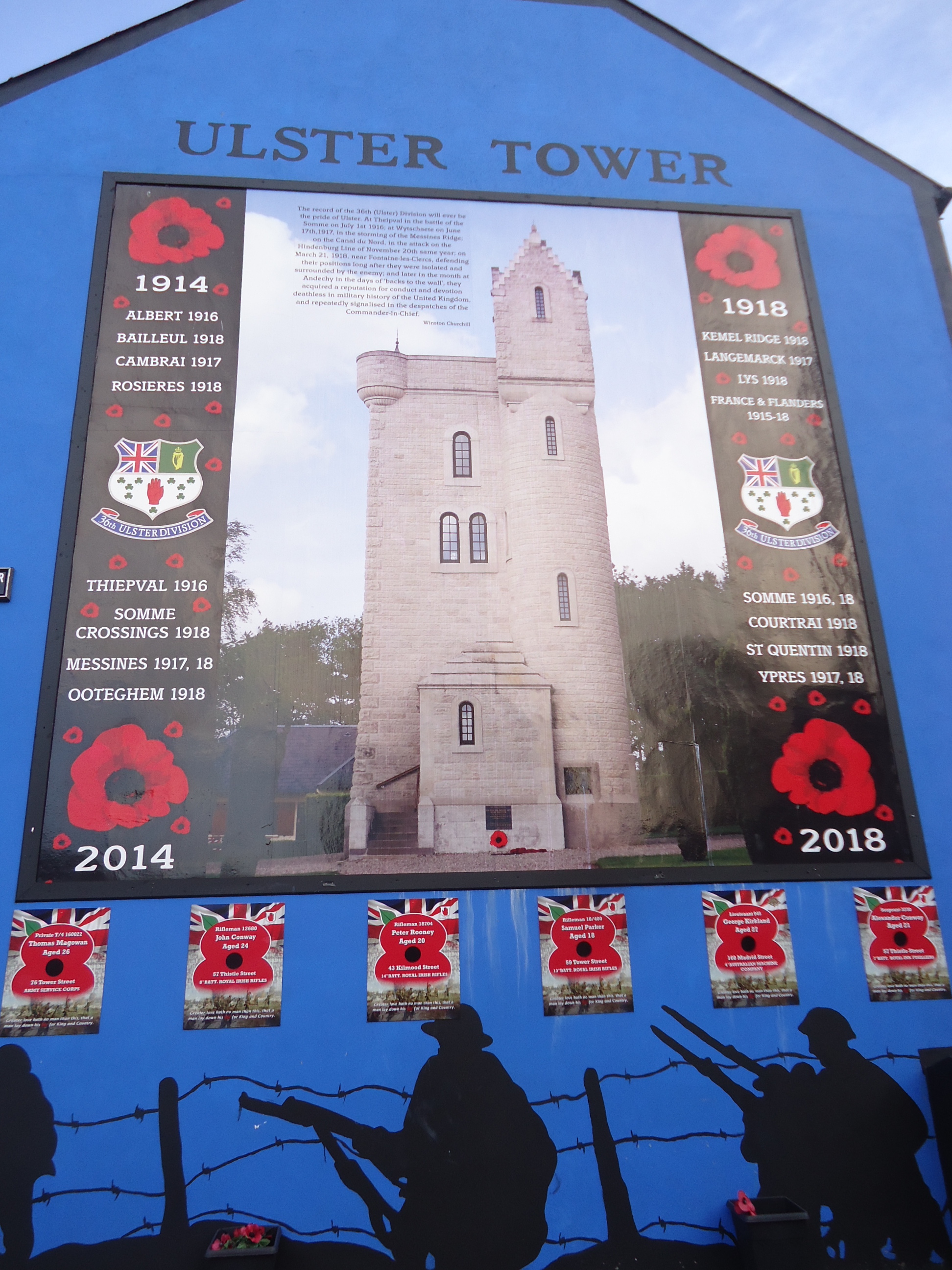Armistice Day
It has been 100 years since the “Great War” ended. The radio and TV have been filled with tributes to the nearly 900,000 from the UK who fought and died in the war. It has been a sombre day.
Nearly 210,000 from Ireland joined the war effort; 35,000 of whom died in WWW1. I took a tour of East Belfast this afternoon to learn about those who served from East Belfast. The tour was led by a historian whose interest started at this memorial. His professor encouraged him to research the names on the obelisk. The local narrative is that all 50 or so names were of UVF members who died fighting in the 36th (Ulster) Division. His research found that was incorrect on two levels.
The men were members of Willowfield Unionist Hall, not of the UVF, a paramilitary organisation. And they fought for all three divisions raised in Ireland (which wasn’t divided at the time), not just Ulster's 36th. Just another example of people twisting history to serve a modern sectarian narrative.
His research project broadened out from this obelisk to include all of East Belfast. He found that 9,000 men from this small area fought in the Great War, and one in six died (compared with one in 10 for the whole of the UK). He found the fighters were both unionist and nationalist and they didn’t all fight for the 36th. Some served in Welsh, Scottish, English, Canadian, Indian, and South African units, as well as the two Irish divisions. They are buried in Iraq, Greece, Turkey, and other locations far from the mass cemeteries in France and Belgium. The French and Belgian flags above mark the site of the largest battles.
He took us to different neighbourhoods where memorials list the names of men who died from that street. Here’s the Gertrude Street memorials.
The 36th Division took the brunt of German artillery on the first day of the Battle of the Somme. On 1 and 2 July the division lost 5,500 killed, wounded or missing out of a total of about 15,000. Their bravery inspired this quote from Churchill:
The quote is on this mural:
The Ulster Tower is a replica of Helen’s Tower, which is on Clandeboye Estate near Bangor. The 36th trained in the shadow of Helen’s Tower. After the war, in 1921, the Ulster Tower was built at Theipval to memorialise the Ulstermen who died at the Somme, Messines, Passchaendele, and other major battles of the Great War.
As if the grotesque violence of war weren’t enough, many of the men who made it home did not live in peace. Our tour guide told of a man who survived the war only to kill himself by putting his head in a gas oven, age 22. Another man was found in a trench he dug himself, shivering and starving, as the bombs fell on Belfast during WWII. Another man was shot and killed with two other Protestants when the IRA burst into his workplace just a few years after the war.
It is so sad to think of so many lives snuffed out before they had hardly begun. Many of these enlistees were teenagers. I can’t imagine climbing out of a trench to face a German firing line even as your comrades fall around you.
I also can’t imagine, at the beginning of WWII, the heartbreak of the families who lost sons, husbands, fathers in the Great War. I can only imagine the reigniting of potent grief as they saw that the war to end all wars didn’t.
It is also disturbing to think of the genesis of WWI--contagion arising from regional conflicts all over Europe. The UK’s exit from the EU and the rightward turn of governments in Hungary, Italy, even Germany--none of it bodes well for a peaceful future.
Nov. 11
